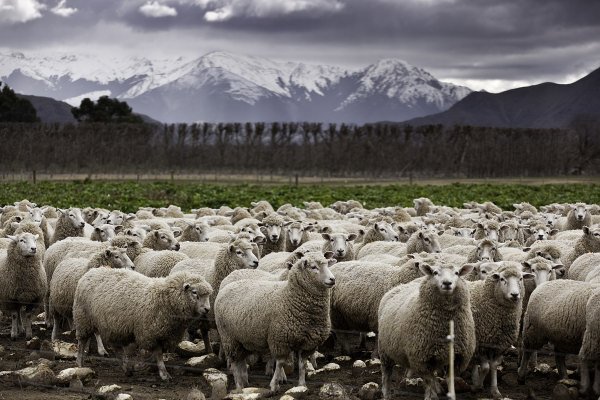The decline in livestock numbers continues with Beef + Lamb NZ’s latest stock number survey estimating drops of 1.4% in breeding ewes and 0.9% in beef cattle as at June 30.
That decline compared to the same time last year is predominantly driven by afforestation changes, pushing breeding ewe numbers from 16.33 million as at June 2021 to an estimated 16.1m as at June 2022. Breeding cows and heifers are estimated to have dropped 1.1% to 1.05m.
The total number of sheep in New Zealand is estimated at 25.78 million, compared to 25.73m last year, a lift of 0.2% due to increased hoggets for restocking after drought and trading animals, while beef cattle numbers decreased by 0.9% to an estimated 3.93m.
The BLNZ stock survey noted afforestation remains a significant concern.
“The report highlights the extent of farmland being converted to forestry, which continues to have a negative impact on rural communities,” BLNZ economic service chief economist Andrew Burtt said.
The impact from the increase in farm sales into forestry is yet to lead to a significant reduction in stock numbers, but Burtt said the impact can be expected soon.
“There is usually a lag between farm sale and plantings, and planting is constrained by availability of seedlings and labour to plant them,” he said.
An earlier BLNZ commissioned report revealed that from January 1 2017 to December 31 2020, 92,100ha of farmland was converted to forestry, of which 14,300ha went into mānuka.
A further 47,400ha was within-farm forestry planting.
BLNZ chief executive Sam McIvor said the extent of sheep and beef farmland being converted to forestry, along with the cumulative impact of a range of other policies on farm viability, is concerning.
“BLNZ’s position remains that there needs to be specific limits on the amount of forestry that can be used to offset fossil fuel emissions in the emissions trading scheme,” he said.
“New Zealand is the only country to allow 100% forestry offsetting. Other countries only allow about 10%.
“Without these limits all other policy changes, while helpful, will not solve the problem.”
McIvor called on the government to stop the loss of productive farmland and the decimation of rural communities.
The census shows hogget numbers nationally were 3.2% higher, which underpinned the 0.2% lift in total sheep numbers.
The report notes that while some were retained to rebuild flocks depleted by drought, others would be slaughtered, the higher than usual number reflecting the timing of the census and delays getting processing space.
The report forecasts a 0.8% decline in this year’s lamb crop at 22.41m due to lower ewe numbers and ewes in lighter condition at mating following a dry autumn.
Pregnancy scanning was mixed due to the impact of drought and facial eczema, with rates similar in the North Island, slightly up in Marlborough and Canterbury but down in Otago and Southland after the dry autumn.
The only regions to increase beef cattle numbers were the North Island’s East Coast and Canterbury-Marlborough. The South Island increase was underpinned by trading stock still on farms being finished.
The number of breeding cows and heifers fell 1.1% with the East Coast the only region to buck that trend, with numbers increasing 2.5%.
The expectation is for a lower calf crop this year due to the decline in cows mated, with forecasts of an 8.4% decline in weaners, from 1.228m last year to 1.124m this year.










